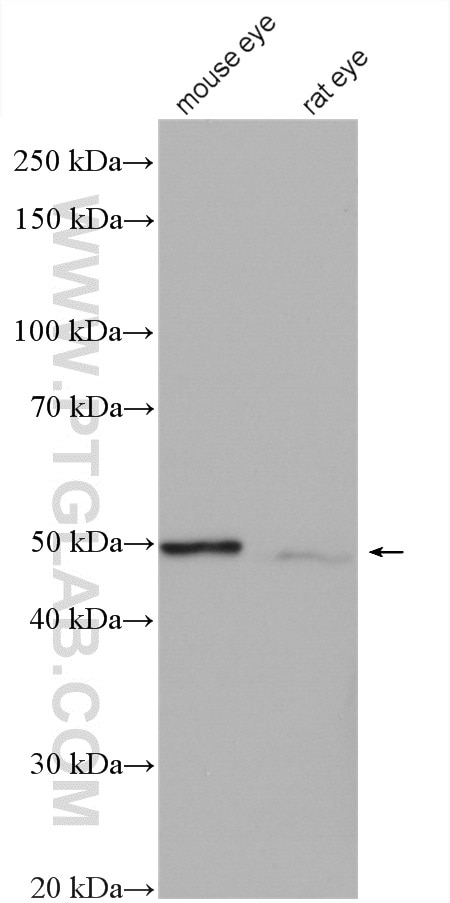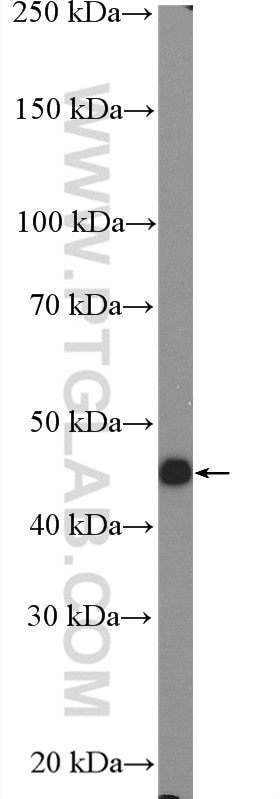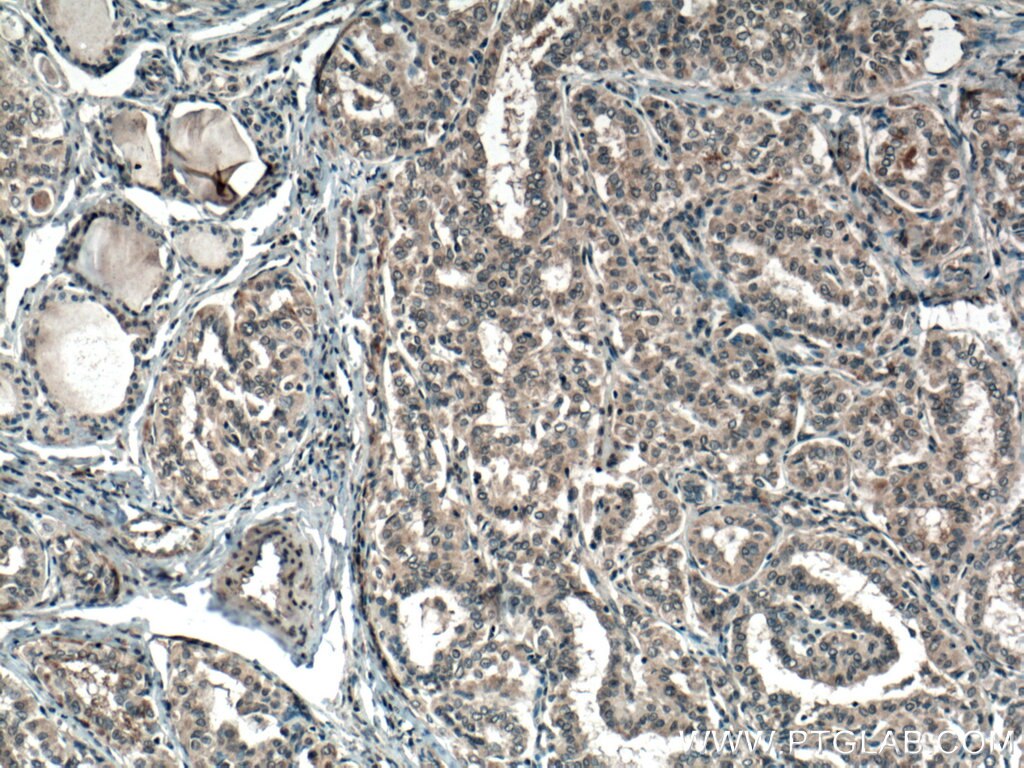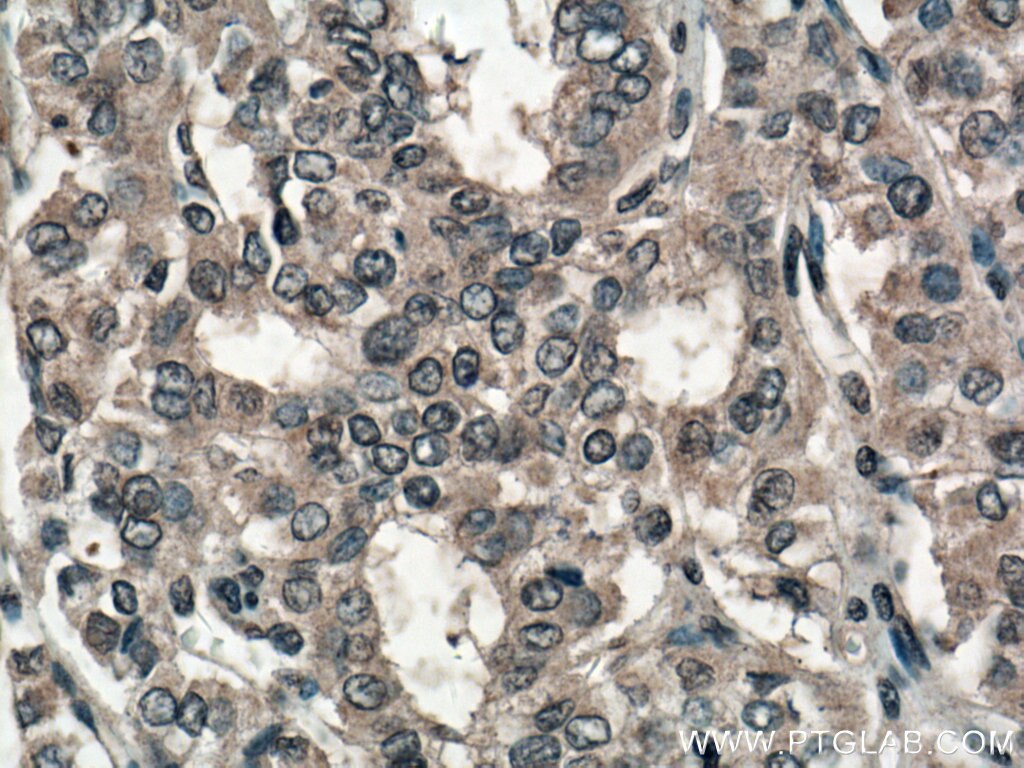Validation Data Gallery
Tested Applications
| Positive WB detected in | mouse eye tissue, A375 cells, rat eye tissue |
| Positive IHC detected in | human thyroid cancer tissue Note: suggested antigen retrieval with TE buffer pH 9.0; (*) Alternatively, antigen retrieval may be performed with citrate buffer pH 6.0 |
Recommended dilution
| Application | Dilution |
|---|---|
| Western Blot (WB) | WB : 1:500-1:2000 |
| Immunohistochemistry (IHC) | IHC : 1:200-1:800 |
| It is recommended that this reagent should be titrated in each testing system to obtain optimal results. | |
| Sample-dependent, Check data in validation data gallery. | |
Published Applications
| KD/KO | See 1 publications below |
| IHC | See 2 publications below |
Product Information
27747-1-AP targets SLC24A5 in WB, IHC, ELISA applications and shows reactivity with Human, mouse, rat samples.
| Tested Reactivity | Human, mouse, rat |
| Cited Reactivity | mouse |
| Host / Isotype | Rabbit / IgG |
| Class | Polyclonal |
| Type | Antibody |
| Immunogen |
CatNo: Ag24254 Product name: Recombinant human SLC24A5 protein Source: e coli.-derived, PGEX-4T Tag: GST Domain: 412-500 aa of BC113628 Sequence: LCLGIPWFIKTAFINGSAPAEVNSRGLTYITISLNISIIFLFLAVHFNGWKLDRKLGIVCLLSYLGLATLSVLYELGIIGNNKIRGCGG 相同性解析による交差性が予測される生物種 |
| Full Name | solute carrier family 24, member 5 |
| Calculated molecular weight | 500 aa, 55 kDa |
| Observed molecular weight | 45-50 kDa |
| GenBank accession number | BC113628 |
| Gene Symbol | SLC24A5 |
| Gene ID (NCBI) | 283652 |
| RRID | AB_2880959 |
| Conjugate | Unconjugated |
| Form | |
| Form | Liquid |
| Purification Method | Antigen affinity purification |
| UNIPROT ID | Q71RS6 |
| Storage Buffer | PBS with 0.02% sodium azide and 50% glycerol{{ptg:BufferTemp}}7.3 |
| Storage Conditions | Store at -20°C. Stable for one year after shipment. Aliquoting is unnecessary for -20oC storage. |
Protocols
| Product Specific Protocols | |
|---|---|
| IHC protocol for SLC24A5 antibody 27747-1-AP | Download protocol |
| WB protocol for SLC24A5 antibody 27747-1-AP | Download protocol |
| Standard Protocols | |
|---|---|
| Click here to view our Standard Protocols |
Publications
| Species | Application | Title |
|---|---|---|
Lab Invest Nuclear receptor binding factor 2 (NRBF2) is required for learning and memory. | ||
Pigment Cell Melanoma Res Impact of a SLC24A5 variant on the retinal pigment epithelium of a Japanese patient with oculocutaneous albinism type 6.
|




